This week we continue our series of episodes to walk through 40 images from my second Japan Winter Wildlife tour for 2016, and today we visit the Whooper Swans, Sulphur Mountain and the majestic sea eagles.
We pick up the trail on day eight of the tour, which was our second morning with the Whooper Swans at Lake Kussharo in Hokkaido, Japan. On one of the two days at this location, we sometimes take a drive to the Bihoro Pass to photograph the sunrise over this caldera lake, but as this is a wildlife tour, we generally give preference to capturing some beautiful wildlife, and the forecast was for snow this day, which meant the pass would be in cloud.
I decided to take the group back to Sunayu to see if we could get something different from the previous morning, which was pretty spectacular, and boy am I glad that I made that decision. I didn’t think we could beat the previous day, but I actually think in some ways we did just that. The swans were flying in through a beautiful mist with snow in the air, so they looked like they were flying inside a giant softbox, as we can see in this photograph (below).

Swans from Heaven Histogram
Here you can see just how soft the light was. The majority of the information in this image is in the top 8% or so of the histogram, with a thin slither of detail running along the bottom to the middle. In fact, I’ll post a screenshot here (right) so that you can see what I mean.
Of course, if we simply left the exposure to the camera to set, that histogram would show all of the information in the middle, and the beautiful white swans would all be a middle grey, which would not look very nice at all. So, to overcome that, I use Manual mode and set my exposure based on a frame full of white snow on the frozen lake, and ensure that my exposure is around +2 and do a test shot, then adjust so that the histogram on the camera shows me that the right-most data is just about touching the right shoulder, meaning the information I’m capturing is white, but not overexposed.
I know this isn’t new to many of you, but in case this isn’t making much sense, here is my process for this. First of all, I decide what aperture I want, based on the scene. As there is going to be more than one swan in the scene, I want a deepish depth of field, so I went for f/11. I also know that I need to have a relatively fast shutter speed to almost but not totally freeze the swans in flight, so I chose 1/400 of a second. This needs to be a bit faster for a single bird up close, but for a scene like this, 1/400 of a second is just about fast enough. Then, with the camera pointing at nothing but the white snow, I adjust the ISO while watching the caret on the exposure meter move until it reaches +2. In this light, that took me to ISO 800. Note that +2 is generally about right for overcast snow, but for snow in bright sunlight, you sometimes only need to adjust to +1 or +1 and 1/3 of a stop.
Then, once the exposure was set like this in Manual mode, we just wait for the birds to arrive. I often call out my settings so that the group can check it against their settings. Sometimes a member of the group calls out for my settings, so I shout them back, and we all just make sure we’re set during the downtime between fly-ins. It is of course necessary to keep updating these settings as the sun gets higher in the sky, but the beauty of setting them like this in Manual mode is that when you have something else in the frame, like the dark trees in the background that we looked at last week, the exposure doesn’t move, which is exactly what we want.
The swans are white, and the snow is white, so we want to record them that way in our images. If we use Exposure Compensation with +2 stops of exposure dialed in, when the birds are over a dark background like the trees, the meter will be fooled into increasing the exposure too much, trying to brighten up the trees, and that would result in totally overexposed swans and snow.
Of course, with the mist, we have to rely on our ears to know when the swans are coming. In the first photograph, you can see that the middle swan in the right side group is calling. They often call like this as they fly-in, which helps us to know that they are coming, so that we can look for them emerging from the mist for shots like this.
In the next image here (below) you can see a larger group that flew in and dispersed somewhat as they landed. I like the way they are forming an arch in this photograph, with the one at the bottom left with his paddles down, as he comes in to land. As I often say, these birds are incredibly beautiful, with a wing span between 205 to 275 cm, which is 81 to 108 inches. That’s a nine foot wingspan for the largest of these birds.
They’re heavy too, some weighing up to 11.4 kg, or 25 pounds, so it’s hardly surprising that in all their beauty, they can look a little bit clumsy sometimes, especially when they spread those bit black feet out as we can see here. The red-crowned cranes are beautiful, and the sea eagles majestic, but some of the participants leave with a deep love for these Whooper Swans, and I’m totally with them on that.
This was just 17 seconds after the first shot we looked at today, so my settings were the same at 1/400 of a second exposure at f/11, ISO 400. My focal length at this point was 105mm, so I had my 100-400mm lens almost wide open for this shot.
This last photo of the Whooper Swans (below) was shot ten minutes later, and was our last fly-in before we went back to the hotel for breakfast. Here, the swans had circled around, and looked like they were going to land, as in the previous image, but these three kept going and flew directly over our heads. I was probably pointing my camera up to around 10 degrees off straight up for this shot, and you can hopefully see from the angle of the swans that they are about to fly overhead.
The light was still incredible as well. My exposure was the same as the first few images, as the sun was well over the trees behind us now, so pretty stable, but just illuminating that mist all around the birds, really, just like they were in a giant soft box. As we walked back to the bus there was a wonderful buzz in the group as we all knew that we’d witnessed some sublimely beautiful moments during this pre-breakfast shoot. It doesn’t get much better than this.
After breakfast, we had a bit of a drive over to Rausu, the fishing village where we’d spend the next three days photographing the sea eagles, but on the way, as usual, we stopped for a quick shoot at Iozan, or Sulphur Mountain. Unfortunately, the mist that had made the swans so beautiful was doing it’s thing over at the mountain too, so the conditions weren’t great.
I remember that everyone in the group had already walked back to the bus as I was still trying to capture something in the occasional brief moments of clarity, as the wind blew the mist away for literally just a split second at a time. I had pretty much given up on the images too, thinking that they were not going to work out, but then when I looked at this one, it felt as though I was looking at the fumaroles underwater, and not a total throw out, so I decided to include it here to help document our trip (below).
My settings were 1/125 of a second exposure at f/11, ISO 200. I was using my 24-70mm f/2.8L II Lens for this shot, at 67mm. After this stop, we drove to a number of places where there are sometimes Ural Owls, but unfortunately we didn’t find any. In fact, we drove back out from Rausu a number of times as I tried to give the group an Ural Owl photo, but we weren’t able to find one on this trip.
The following morning, we went out for our first shoot from the boat at Rausu, where we were to shoot the Steller’s Sea Eagles and White-Tailed Eagles. The El Niño weather this year took it’s toll on Tour #2 as well, and this became the first year that we didn’t have any sea ice at all. It just didn’t come. Thanks to my negotiation a few years ago though, we now go out anyway, and get great shots of the sea eagles taking the fish from the water, which I personally think actually looks better than them catching them off the top of the sea ice.
Here we can see a Steller’s Sea Eagle from the front as he takes a fish from the sea. There was a storm coming, and winds were high, so there was a bit of swell as well, and the light was relatively low. My settings were 1/1000 of a second at f/8, ISO 1600, so it was workable, and the results really do show what it was like this year.
As I’ve mentioned in previous episodes, the Canon EOS 5Ds R bodies that I used on this trip really did work well in terms of autofocus during the entire trip. I found them more capable of snapping focus onto the bird than my 7D Mark II and even better than my old 1D X. I was sometimes raising the camera and focusing literally just moments before I released the shutter, and there was probably less than 2% of my images in which the focus snapped to the background water. The success ratio was much higher under similar conditions than when using my other cameras.
Of course, the slower frame rate makes the 5Ds more difficult to use for wildlife, but I found this liberating too. I had to be much more deliberate when choosing the moment to release the shutter, and I was shooting many of these eagles shots with just one frame, or a burst of two to three frames, rarely more. I actually feel as though the limitations that I placed on myself by taking only two 5Ds R bodies, actually made me hone my skills further, possibly even making me a better photographer.
You can also see here that I have a little bit of movement in the wing tips of the eagle. This is something that annoys the hell out of some bird photographers, but this is exactly why I like to photograph big birds like this at around 1/1000 of a second. It’s fast enough to freeze most of their motion, but leaves a bit of blur in the wing tips on some frames, and that’s just the amount of dynamism I like in my photographs.
When there’s no ice, the pace of shooting is incredibly fast. The eagles are hungry, and they are literally in their hundreds, so we are shooting maybe five to ten swoops like the one in this next photograph (below) each minute some times. I selected this image to show you from hundreds of frames, and still this was only one minute after the last photograph.
As you can see there was a little bit of snow in the air too, which I quite like. I think it adds atmosphere to the images. My settings here were the same as the previous photograph. Again, I was using Manual mode as usual, so unless the light or my intensions change, it’s pretty much locked in. I’m still exposing to the right though. If you look at the white on the eagle’s wings and legs, they are pure white, almost but not quite overexposed. If you left the exposure to the camera these bands of white would be totally blown out. In fact, I’d say that on the camera, the white on this Steller’s Sea Eagle probably were flashing as they started to look overexposed to the camera. Lightroom actually gives you about two thirds to a stop of exposure back, as it reprocesses our images.
A few minutes later again, here we see a White-Tailed Eagle coming in to catch his fish. I had actually changed my ISO from 1600 to 1250 for this shot, so I imagine I had been checking my images and saw that the white on the eagles was close to blowing out, and brought my exposure down by a third of a stop. Again, when I make changes, I call out my new settings to the group.
I like the snow in this photo again, adding a bit of atmosphere, and the pensive look on the face of the eagle focusing on that fish, is one of the things that makes these birds so awesome. I always feel so privileged to be around these magnificent animals.
These last three images were from the first day with the eagles. We were photographing some of the eagles on the harbor wall from the boat just briefly as we finished our shoot, but the wind was getting stronger and stronger by the minute, as the storm approached, so we had to cut it short by a few minutes, and then our driver forged through the fresh snow that was already making road conditions very difficult, even for the ten minute ride back to our hotel. We were to be locked down for the rest of the day as the storm passed, so we had a morning to look through our photographs, and I did a workshop session through the afternoon.
Unusually for Rausu, the storm did pass overnight, so although we were not able to go out for a dawn shoot, we did go out after breakfast for a second session with the sea eagles. In this next image you can see that the sun was poking through the clouds a little bit, which actually increases the contrast quite a lot, making for darker shadows. I do like how the light has caught the water in this photograph though (below).
The wind was still blowing from the land out to sea, which means that the birds would always fly towards the land with the sun behind them. This is the luck of the draw really. We can’t control the wind direction, but we can make the most of the conditions we are dealt. I have a lot of photographs that I’m happy with from this second morning, although it was probably the least productive of the three days due to the lighting, until the last ten minutes or so that is.
We went back to the harbor wall for a while, and at first, I was not expecting much, but then I realized that the eagles were, to a degree, struggling to land on the snow covered harbor wall because of the still high winds. This meant that they would just float over the wall, sometimes folding their wings back a little to reduce the drag, and allow themselves to fall closer to the wall in an attempt to land, as we can see here (below).
This is another one of my favorite photos from this year’s winter wildlife tours. This Steller’s Sea Eagle looks like a boxer with his fists clenched, about to lunge forwards across the ring to deal a mighty blow against his opponent. The other beautiful thing about this and the following image that we’ll look at, is that the eagles are over a large expanse of snow on the harbor wall at this point, so that is reflecting light back up, illuminating the underside of the birds, which makes for much more beautiful images.
This next photograph (below) is one that we also looked at in episode 514, when I walked you through my image editing and selection process for tour #2 this year. Take a look if you’d like to see a 100% crop of the eagles face, and you’ll probably understand why I am so excited about shooting wildlife with the 5Ds R bodies. The results are absolutely spectacular.
Of course, this is as the Steller’s Sea Eagle opens his wings to slow his decent as he gets closer to the harbor wall. According to my EXIF data, this was less than a second after the previous photograph. They were both shot at 08:08:49. They were both shot at 1/1000 of second, at f/10, ISO 400 too, as I was able to bring the ISO down slightly as we photographed over the wall, due to the better light.
That takes us to the end of our 10 photographs for today, so we’ll wrap it up there for this episode. I’ll be back next week where we’ll take a look at a photograph of an adorable Norther Red Fox from later this day, and a few more photographs from a dawn shoot with the eagle on our third and final morning with them, before we head over to Utoro on the other side of the Shiretoko Peninsula for a little bit of landscape work, and a stunningly beautiful woodpecker to end our tour.
2018 Winter Wonderland Tours
Before we finish, I’d like to remind you that we are now taking bookings for the 2018 Snow Monkeys & Hokkaido Tours. For details and to book your place, visit the tour page at https://mbp.ac/ww2018. Our 2017 tours are already sold out, but if you’d like to be put on the wait list, please contact us.
Show Notes
Details of the 2018 Tours: https://mbp.ac/ww2018
Subscribe in iTunes for Enhanced Podcasts delivered automatically to your computer.
Download this Podcast in MP3 format (Audio Only).
Download this Podcast in Enhanced Podcast M4A format. This requires Apple iTunes or Quicktime to view/listen.


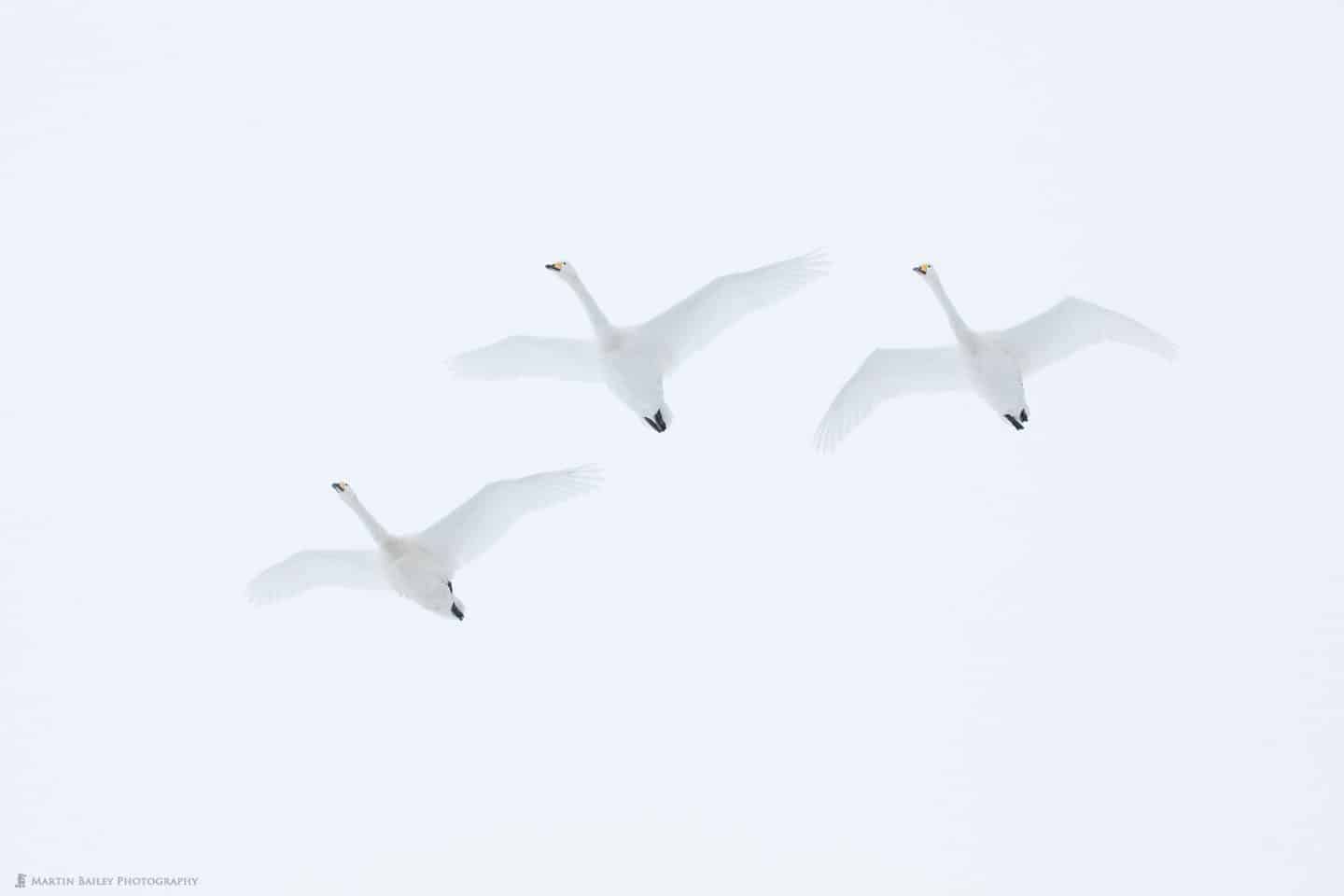
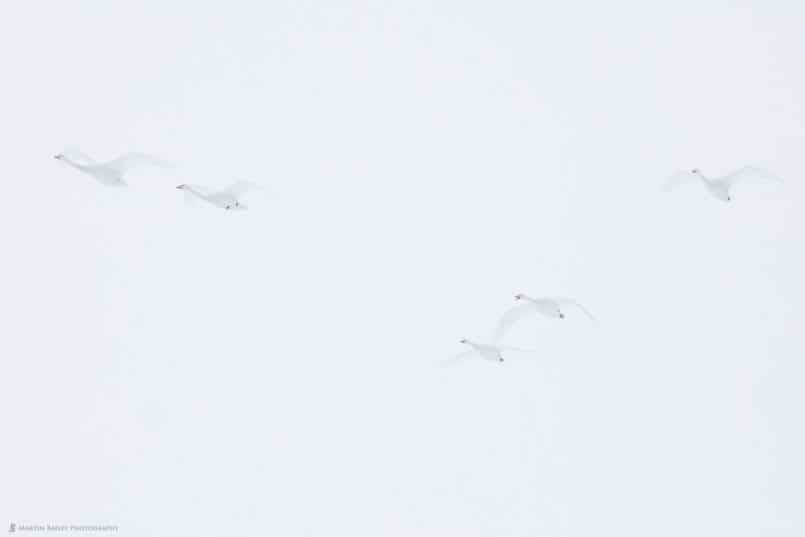
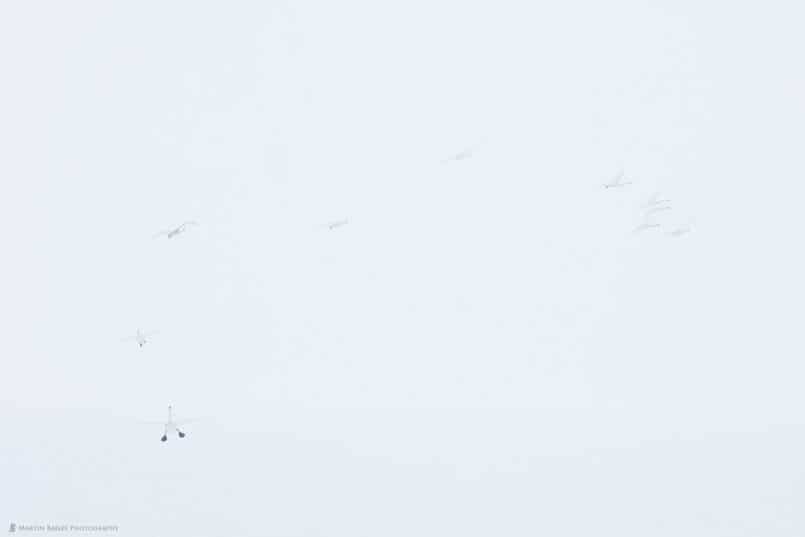
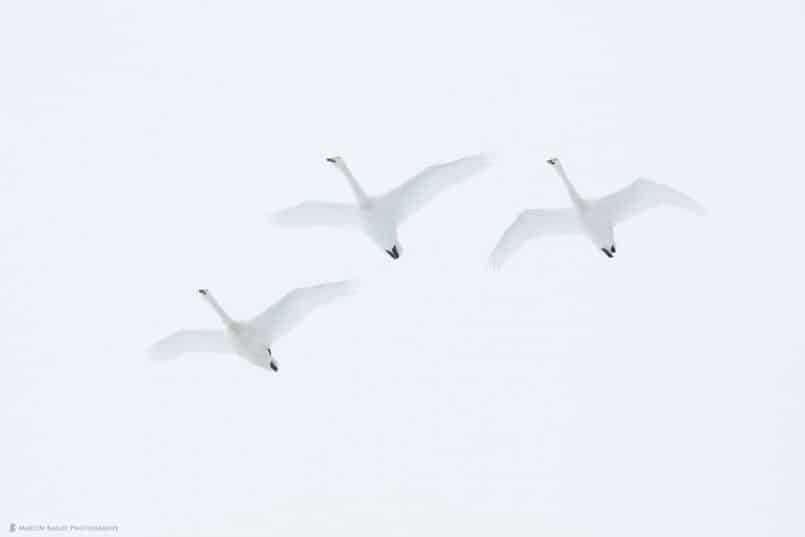
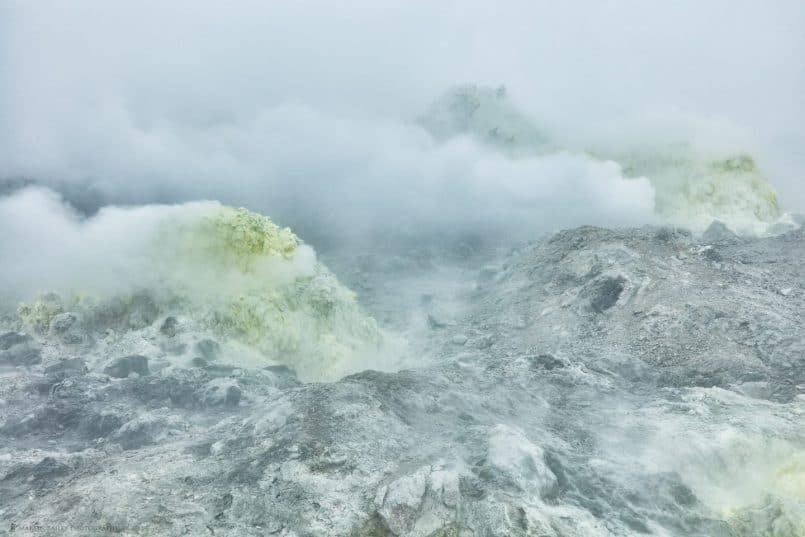
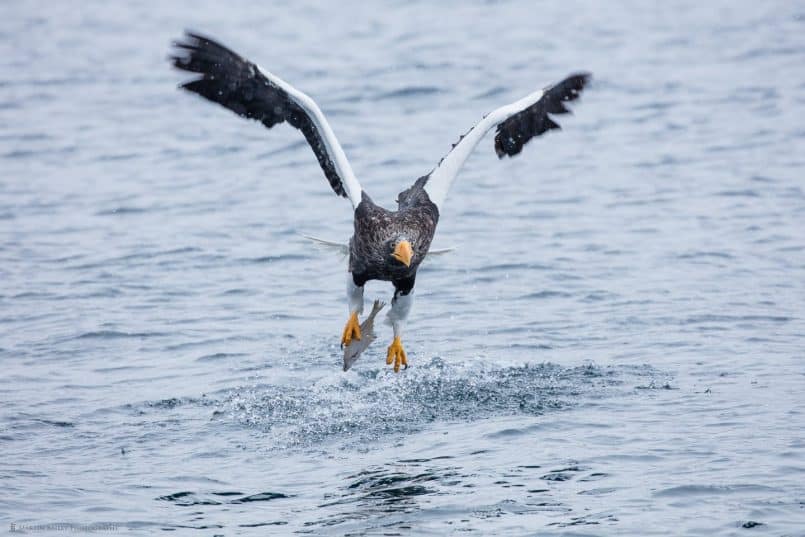
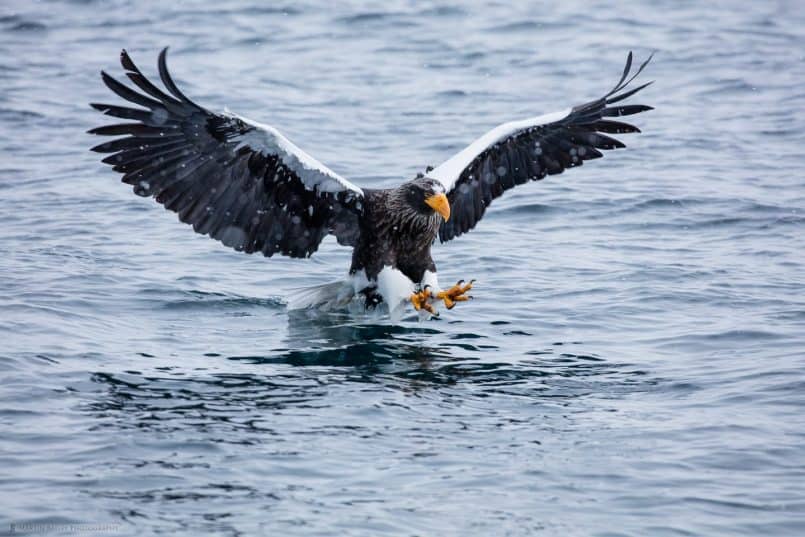
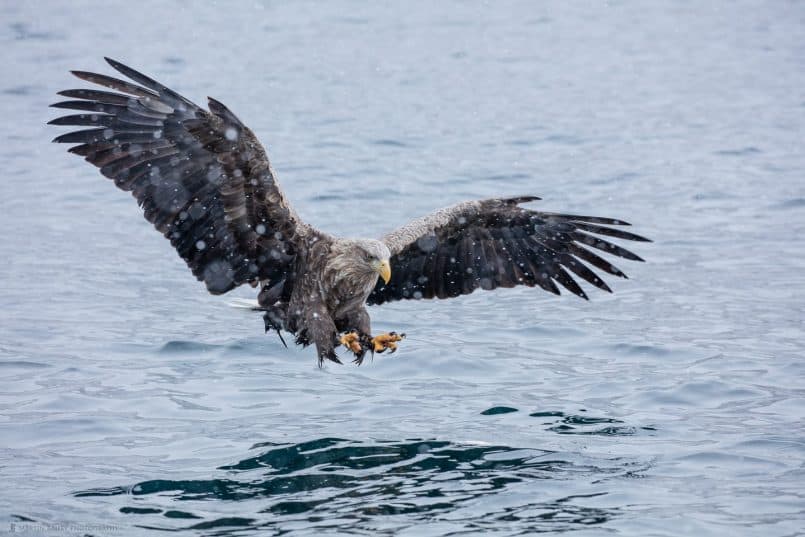
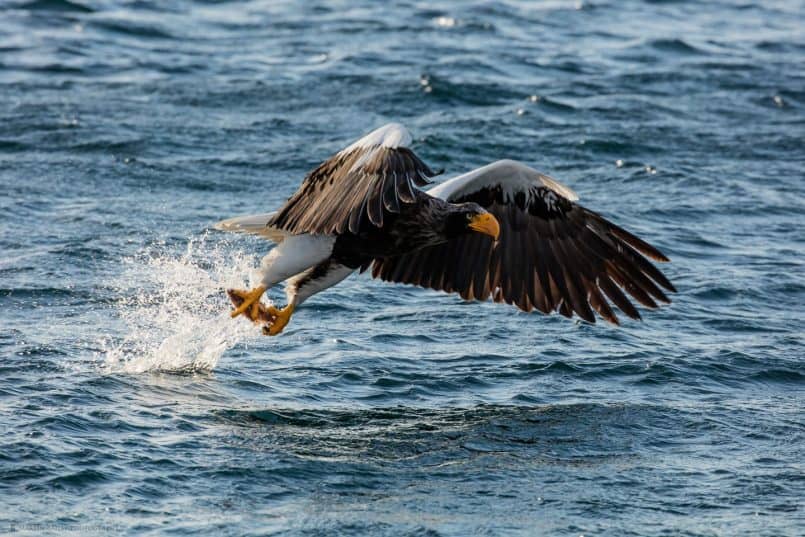
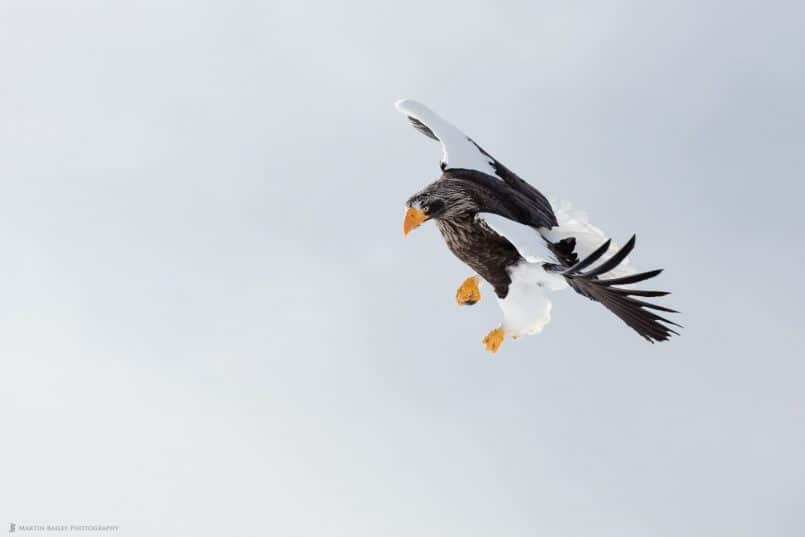
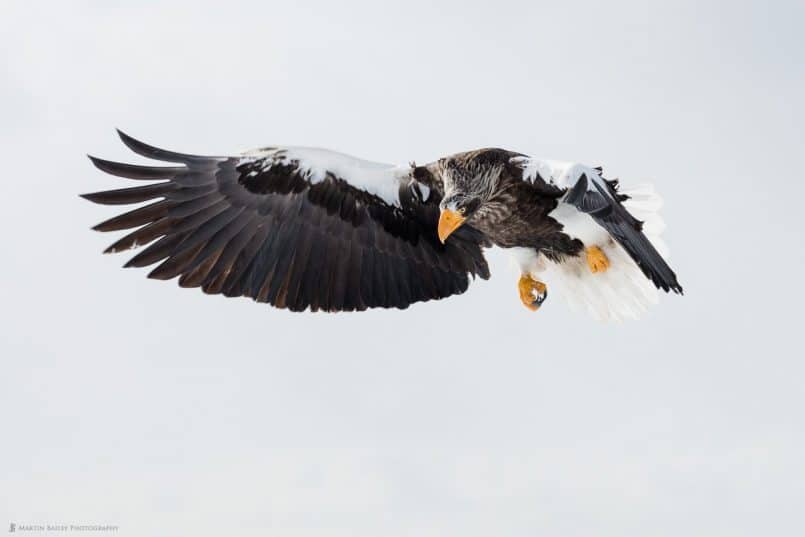
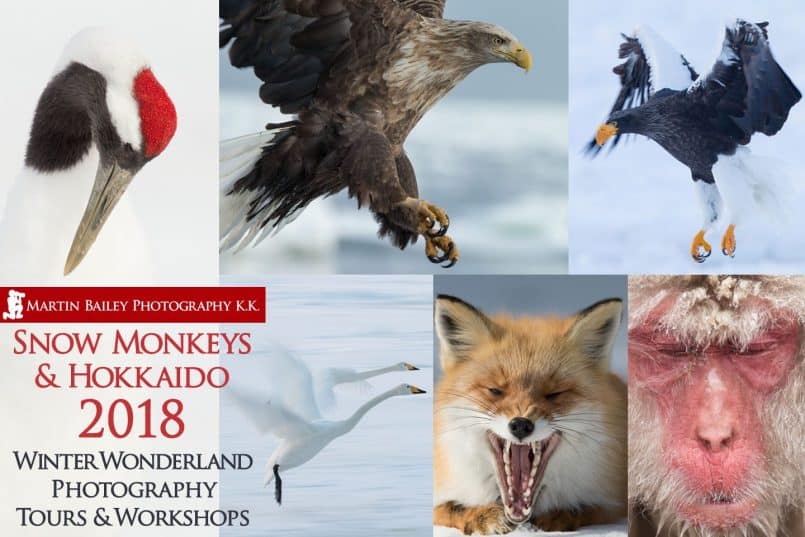

“Swan Ascent” is a real beauty – gorgeous work as always!
Thanks!